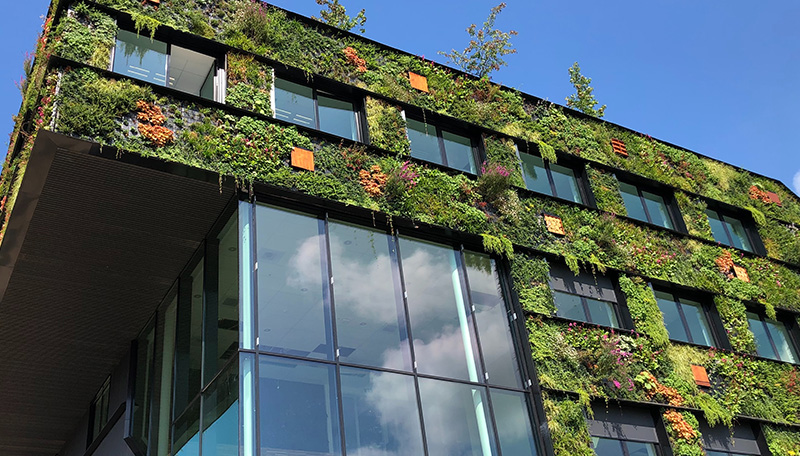We are honored to introduce Catherine Hurley to the Green Deal platform! In her article, Catherine Hurley gives an overview of how sustainable buildings can impact our environment. She further explains how to be Green in construction by investing in insulation systems, efficient use of water, renewable energy and make use of sustainable materials that have a lower environmental impact than traditional building materials.
Introduction
Sustainable buildings are structures that are designed, constructed, and operated in a manner that minimizes their environmental impact and maximizes their energy efficiency. These buildings are not only better for the environment, but they also save money on energy costs and provide a healthier living and working space for the people inside.
How to be Green in Construction
Consider the fitting of insulation, which helps both in hot summers and when the weather gets cold. The investment in insulation results in less use of heating and cooling for the space. It also helps protect against the negative impact of the humid environment in Malta, especially when combined with effective waterproofing.
Efficient use of water is also an important aspect of sustainable building. This can include the use of low-flow toilets, showerheads and taps, as well as the use of greywater systems to reuse water from sinks, showers, and washing machines for irrigation or toilet flushing. Saving and storing water is something which has been done throughout the ages in Malta and for good reason. It is important that we view water as the useful commodity that it is.
Another aspect of sustainable building is the use of renewable energy sources. This can include solar panels, solar water heaters, and geothermal systems. These systems can provide a large chunk of the building’s energy needs, reducing the reliance on fossil fuels and cutting down on carbon emissions.
Then there is the use of sustainable materials. These materials are often made from natural or recycled sources and have a lower environmental impact than traditional building materials. Hearteningly, more and more sustainable materials are available in Malta for construction projects, driven in part by the increase in environmentally conscious clients.
The way forward
Sustainable buildings should be designed to minimize their impact on the natural environment. Ideas like the use of green roofs covered in plants to reduce the heat island effect and improve air quality, rainwater harvesting systems, re-use of materials where possible, recycled or low impact materials where not, energy efficient appliances and lighting, and using smart technology to optimise the energy usage of the building, all contribute to minimise our impact on this planet.
The cost of choosing sustainable building practices must be seen in tandem with the lifetime operating cost of the building, especially in light of the increasing long-term efficiency and reducing cost of technology. In Malta grants are available to assist consumers to make the switch to more sustainable solutions. Organisations such as the Malta Chamber of Commerce regularly provide information sessions on what is available and how to benefit from these schemes.
It can sometimes feel like the climate problem is too big for us to solve as individuals. But every single person choosing sustainable measures contributes to a movement towards sustainability being the norm.
Will sustainability factor into the next purchase you make for your home or office?
Contributor(s)

Catherine Hurley
Catherine is an energy and construction major projects expert and CEO, with a track record of delivering complex projects here in Malta and abroad. She has a special interest in smart sustainable buildings and was previously CEO at Quad Central, the first LEED platinum rated development in Malta. Prior to that, Catherine led the "LNG to Power '' project in Malta which introduced natural gas as fuel for electrical generation for the first time to Malta, along with the latest CCGT technology. As a result, national emissions from power generation were cut by circa 53% and particulate matter by 90%. Catherine currently works as consultant and advisor on a number of energy projects, as well as strategic account director for AIS Malta, a design and build office interiors firm.






